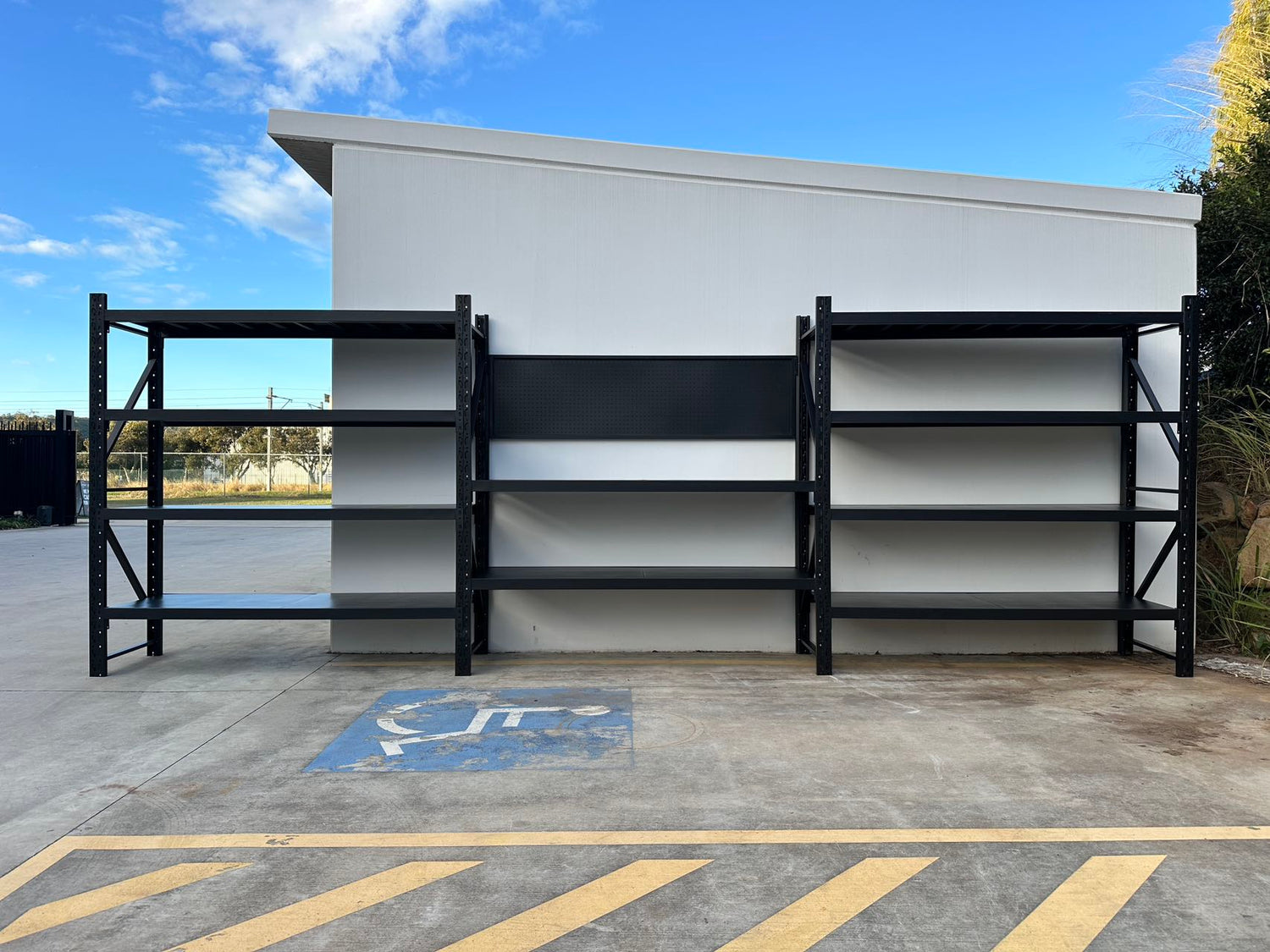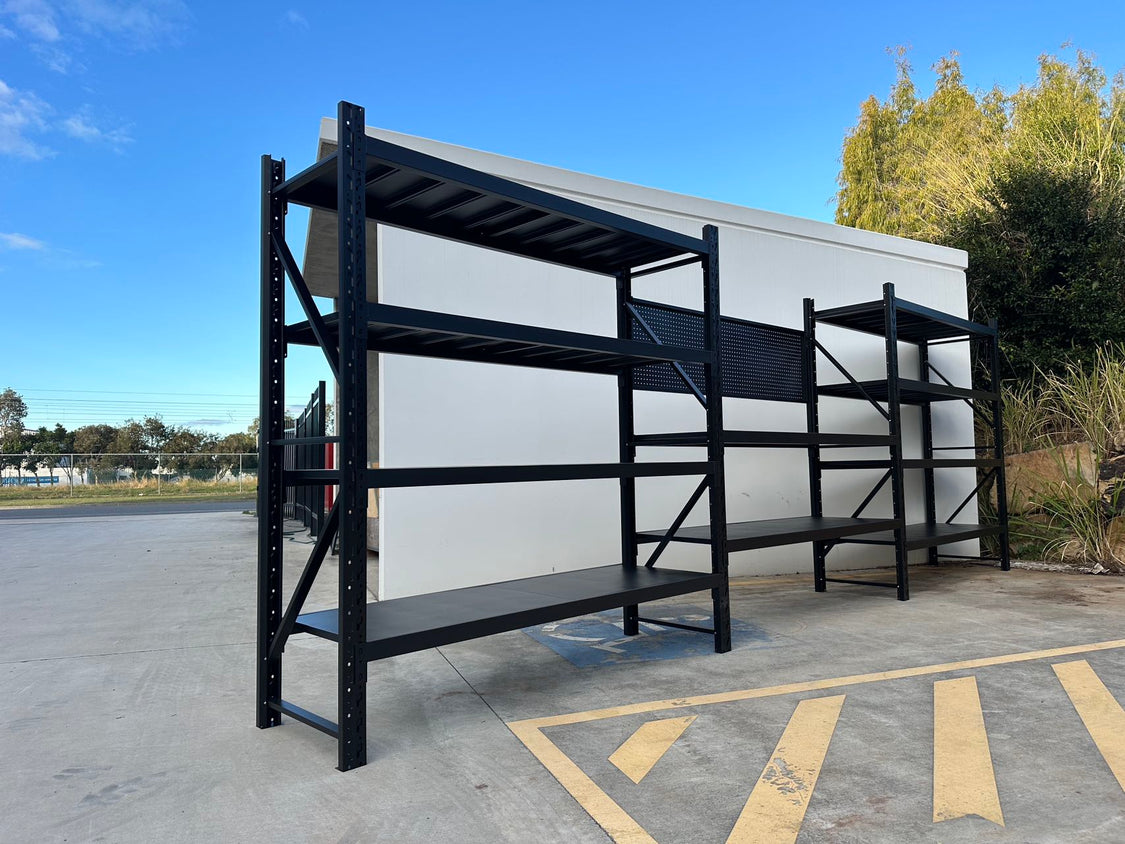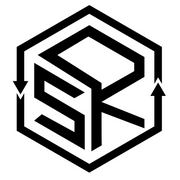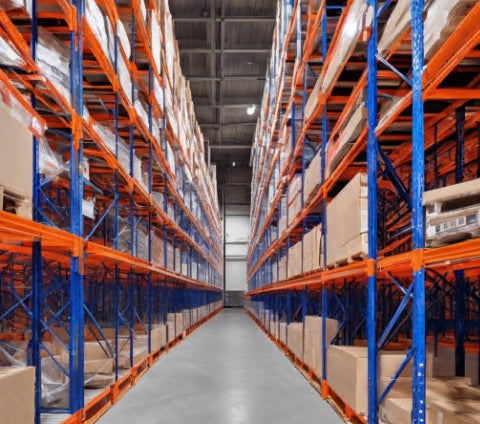Efficient storage is one of the most important aspects of warehouse management. The shelves, racks, and other storage systems in a warehouse help businesses maximize space and improve productivity by organizing goods in a systematic manner. However, warehouse shelving is not a one-size-fits-all solution. Different types of shelves are designed to meet various storage needs based on the nature of the goods being stored, the layout of the warehouse, and the intended use.
In this comprehensive guide, we will explore the different types of shelving systems used in warehouses, including popular systems like steel shelving, pallet racks, and workbenches. We will also provide detailed information about their features, advantages, and how they fit into the overall warehouse organization. Understanding these shelving systems is essential for anyone in warehouse management, logistics, or supply chain operations.
Types of Shelving in a Warehouse
Warehouse shelves come in many forms and are designed for different storage needs. Some of the most common types of shelving in warehouses include:
1. Pallet Racking Shelving

Pallet racking is one of the most popular and widely used shelving systems in large warehouses. This shelving system is designed to store pallets of goods in horizontal rows, typically on beams or shelves.
Key Features of Pallet Racking:
- Heavy Duty: Pallet racks are built to handle large, heavy loads, which is why they are commonly used in warehouses that deal with bulky items or bulk storage.
- Vertical Storage: They make use of vertical space, allowing warehouses to store more items in a smaller footprint.
- Adjustable: Many pallet racking systems are adjustable in height and width, making it easy to accommodate different pallet sizes and load capacities.
Common Types of Pallet Racks:
- Selective Pallet Racking: This is the most common type, providing direct access to every pallet in the system. It's ideal for warehouses with a high turnover of goods.
- Drive-In Racking: Goods are stored in lanes where forklifts drive into the rack to load or unload items. This system is space-efficient but works best with high-volume storage and lower SKU turnover.
- Push Back Racking: Pallets are loaded on inclined rails that move back to the next available position, ideal for storing multiple pallets of the same product.
2. Steel Shelving

Steel shelving systems are a versatile storage solution used in warehouses that require adjustable and durable shelves for various products. Steel shelving units are available in different configurations and sizes, allowing them to be used in a wide range of environments.
Key Features of Steel Shelving:
- Durability: Made from high-strength steel, this shelving system can withstand heavy-duty loads.
- Adjustable Heights: Many steel shelving systems, such as the SteelPowerShelving Workstation with Pegboard, offer adjustable shelf heights for more flexibility in storage.
- Easy Assembly: Steel shelves often feature a click-in assembly system, allowing for quick setup without the need for specialized tools.
- Space-Efficiency: Steel shelving systems can be designed to maximize vertical space in a warehouse, increasing storage capacity.
Example: SteelPowerShelving Workstation with Pegboard

This is a high-quality steel shelving system that can be configured for various warehouse needs. It includes several features designed to enhance storage and workspace efficiency, such as:
- Dimensions: 2.0m height x 6.0m length x 0.6m depth, with a 3000kg weight capacity.
- Flexible & Adjustable: The shelves are adjustable in height, and additional kits (such as 1.2m, 1.5m, and 2.0m extensions) can be added to expand the shelving system.
- Workbench Integration: The system includes a workbench and pegboard, making it ideal for assembly or maintenance tasks.
- Durability: The shelves are made with high-quality materials, including uprights with 0.7mm thickness and beams with 0.7mm thickness for optimal strength and support.
3. Cantilever Racks
Cantilever racks are ideal for storing long, bulky items that may not fit on traditional shelving units. These racks feature horizontal arms that extend from vertical columns, allowing items such as pipes, lumber, and sheet metal to be stored efficiently.
Key Features of Cantilever Racking:
- Easy Access: Items stored on cantilever racks are easy to access from all sides, making them ideal for goods that are often picked or loaded manually.
- Space-Efficient: The open design of cantilever racks makes them perfect for storing long or oversized items in tight spaces.
- Heavy-Duty: Cantilever racks are built to handle heavy loads, making them suitable for industrial warehouses.
4. Flow Racking
Flow racking is a system that utilizes gravity to move items from the back of the rack to the front. This system is commonly used in warehouses where items are stored on pallets and need to be accessed in a first-in, first-out (FIFO) order.
Key Features of Flow Racking:
- FIFO System: Flow racks are perfect for warehouses dealing with perishable goods, pharmaceuticals, or products with expiration dates, as they ensure that older stock is used before newer stock.
- Easy Access: The slanted rails allow products to roll down into position, making it easy to pick and load items.
- Space-Saving: Flow racks maximize vertical space and minimize the amount of floor space needed for storage.
5. Mezzanine Shelving
Mezzanine shelving is a multi-level shelving system that is used to increase storage capacity without expanding the warehouse’s physical footprint. These systems involve building a raised platform or second level in the warehouse to store items.
Key Features of Mezzanine Shelving:
- Vertical Expansion: This system is ideal for warehouses that have a lot of unused vertical space.
- Customizable: Mezzanine shelves can be designed with different shelf sizes, load capacities, and configurations to fit your specific needs.
- Cost-Effective: Mezzanine shelving allows for more storage space without the need to build an entirely new warehouse.
How to Choose the Right Shelving System for Your Warehouse
Choosing the right shelving system for your warehouse depends on several factors. Here are a few tips to help you make the best decision for your storage needs:
1. Consider the Type of Products Being Stored
Different products require different shelving systems. For example, bulky items such as furniture may be best suited for pallet racking or cantilever racks, while smaller, lighter products can be stored in steel shelving units.
2. Evaluate Your Space
The available space in your warehouse is crucial when choosing a shelving system. If you have limited floor space but plenty of vertical height, mezzanine shelving or flow racking might be the best solution.
3. Think About Accessibility
Some shelving systems, such as pallet racking, allow for easy access to every item, while others, like drive-in racking, may limit access to certain pallets. Consider how often and how quickly you need to access goods when choosing a system.
4. Weight Capacity
Different shelving systems have varying weight capacities. Ensure that the system you choose can handle the weight of the items you intend to store. For instance, SteelPowerShelving Workstation offers a robust 3000kg capacity, which makes it ideal for storing heavy equipment.
Frequently Asked Questions (FAQs)
1. What is the best shelving system for small warehouses?
For small warehouses, it’s recommended to go with adjustable steel shelving or modular shelving systems that can fit into tight spaces while providing flexibility. Mezzanine shelving is also a good option if you have unused vertical space.
2. Can I customize my shelving system to fit specific needs?
Yes, many shelving systems, including those from manufacturers like TRUST SUNSHIEN, are customizable in terms of height, width, and even load capacity. You can also opt for additional kits or extensions to expand your storage capabilities.
3. How do I maintain my warehouse shelving?
Regular maintenance of your shelving systems is crucial to ensure safety and longevity. This includes checking for wear and tear, inspecting the weight capacity, ensuring shelves are level, and maintaining the integrity of the materials. It’s also important to avoid overloading shelves beyond their rated capacity.
Summary Table of Common Warehouse Shelving Systems
| Shelving System | Best For | Key Features | Load Capacity |
|---|---|---|---|
| Pallet Racking | Bulk storage of heavy goods | Adjustable height, high capacity, direct access | Varies (up to several tons) |
| Steel Shelving | Smaller, lighter items | Adjustable, easy assembly, versatile | 500kg to 3000kg per unit |
| Cantilever Racking | Long, bulky items (e.g., pipes) | Horizontal arms, open design, easy access | 1000kg+ per arm |
| Flow Racking | FIFO storage for perishable goods | Gravity-based, space-saving, first-in, first-out | 500kg to 2000kg per unit |
| Mezzanine Shelving | Multi-level storage in tight spaces | Vertical expansion, customizable | Varies (up to several tons) |

